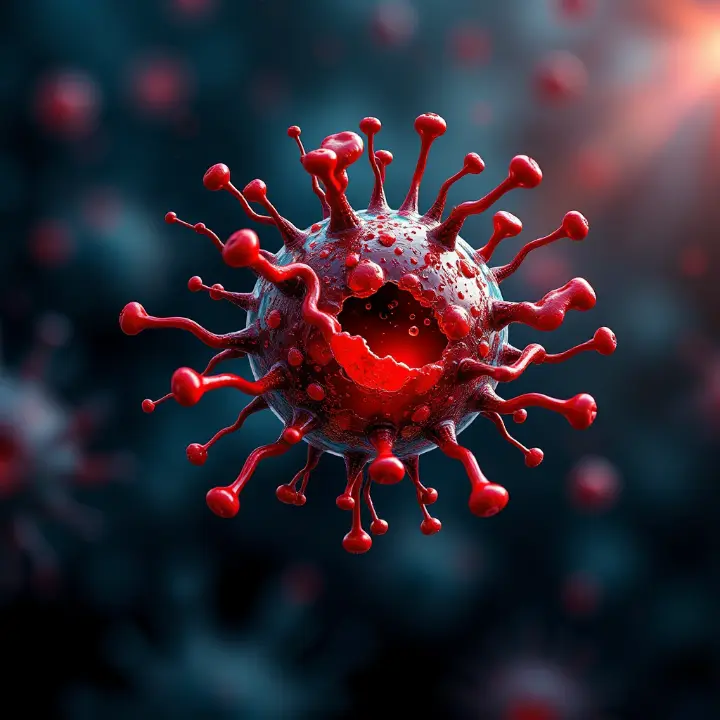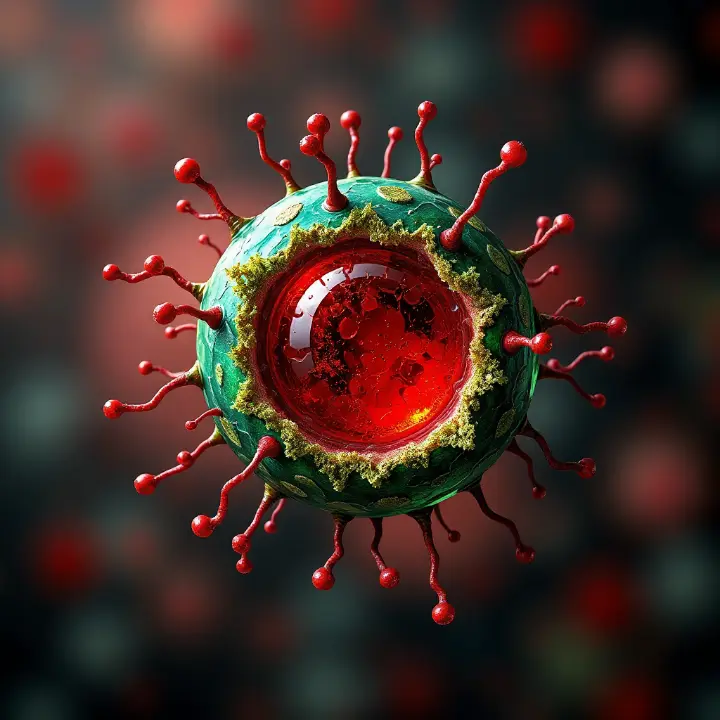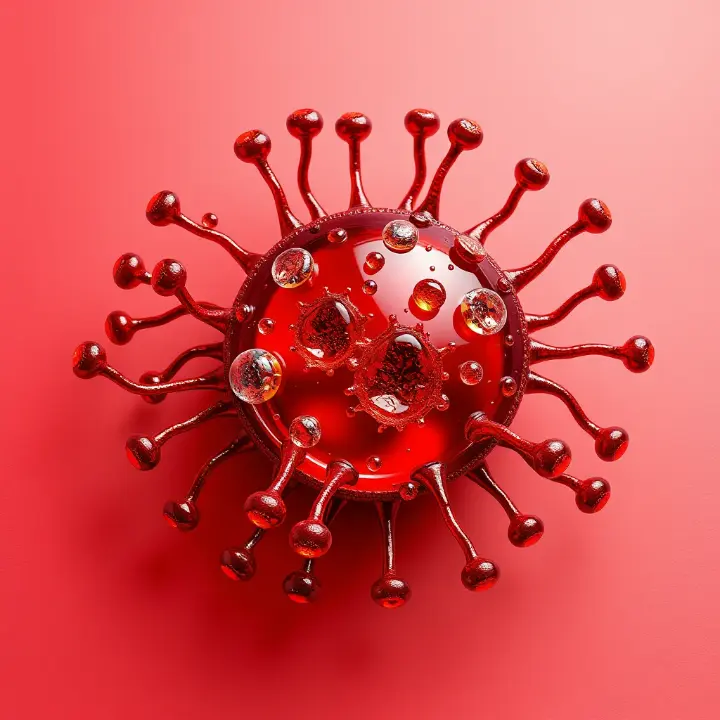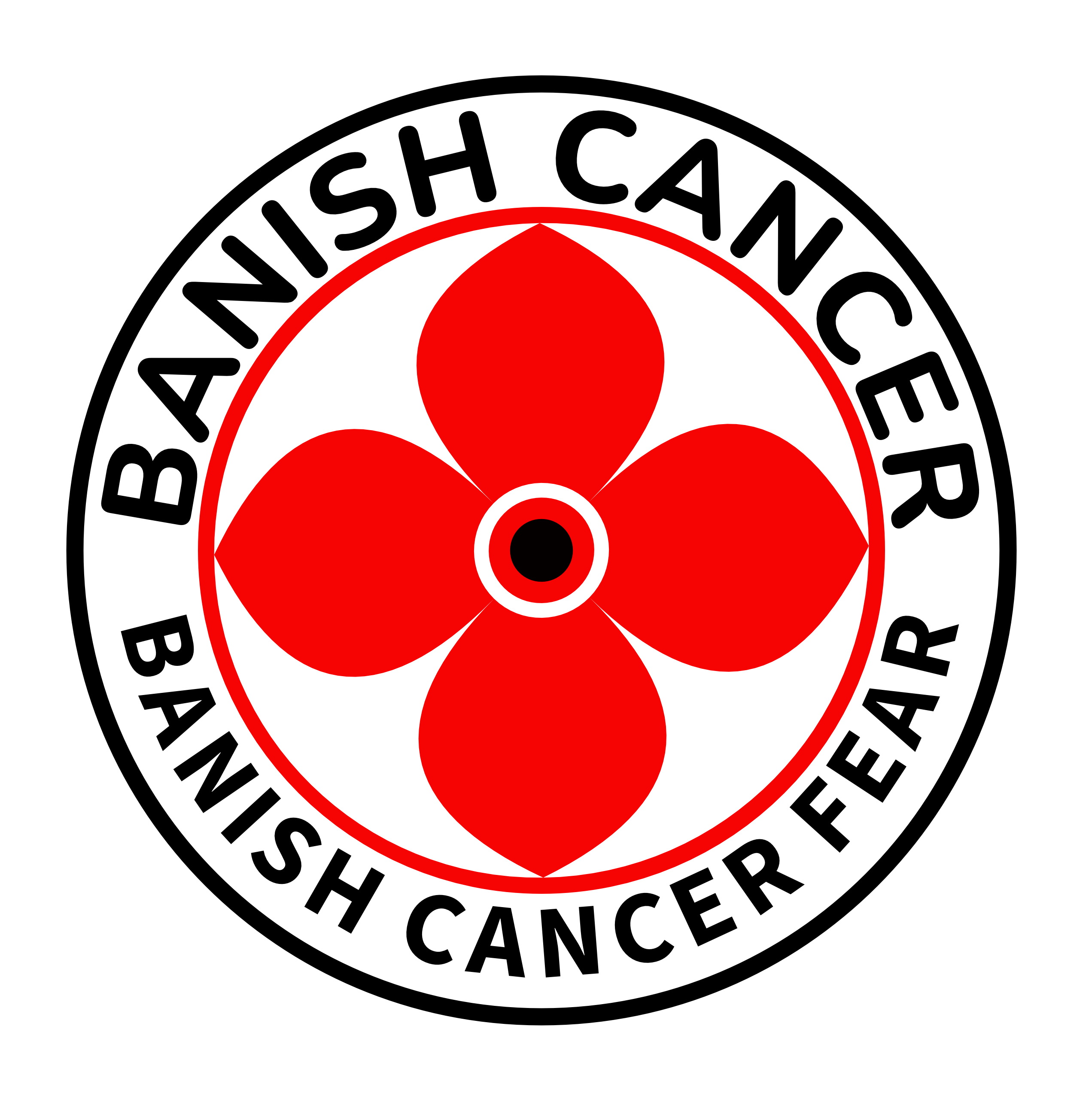What Is Angiosarcoma

Angiosarcoma is a rare and aggressive cancer that begins in the lining of your blood or lymph vessels. It grows quickly and can spread to multiple areas of your body, including the skin, internal organs, and soft tissues. Survival rates vary depending on the location. For example, breast angiosarcoma has a 5-year survival rate of 44%, while visceral angiosarcoma has a much lower rate of 8%.
Type of Angiosarcoma | 5-Year Survival Rate |
|---|---|
Breast Angiosarcoma | 44% |
Soft Tissue Angiosarcoma | 33% |
Visceral Angiosarcoma | 8% |
Understanding its aggressive nature can help you recognize the importance of early detection and treatment.
Key Takeaways
Angiosarcoma is a rare, fast-growing cancer. It often has no early signs, so finding it early is very important.
Changes in genes and exposure to things like radiation or certain chemicals can raise the chance of getting angiosarcoma.
Treatments include surgery, chemotherapy, and new methods like targeted drugs and immunotherapy. These can help people live longer.
Regular doctor visits are important for people at risk, especially after radiation treatment or if they have lymphedema.
Support from family, friends, and groups can really help people dealing with angiosarcoma.
Causes and Risk Factors
Causes of Angiosarcoma
Angiosarcoma develops when cells in the lining of blood or lymph vessels grow uncontrollably. This abnormal growth often results from genetic mutations that disrupt normal cell behavior. Research has identified specific genes linked to this cancer. For example, the MYC gene often shows amplification in cases caused by radiation exposure. Similarly, the FLT4 gene is frequently amplified in angiosarcoma associated with chronic lymphedema.
Gene | Association | Context |
|---|---|---|
MYC | Amplification | Consistently associated with angiosarcoma, especially in radiation-induced cases |
FLT4 | Amplification | Associated with angiosarcoma, particularly in chronic lymphedema cases |
These genetic changes can trigger the rapid and aggressive growth that characterizes angiosarcoma.
Risk Factors
Genetic Predispositions
Your genetic makeup can influence your risk of developing angiosarcoma. Mutations in certain genes, like MYC and FLT4, may increase susceptibility. If you have a family history of cancers involving blood or lymphatic vessels, your risk might be higher.
Environmental Exposures
Exposure to harmful environmental factors can also raise your risk. Radiation therapy, often used to treat other cancers, has been linked to angiosarcoma. Prolonged contact with certain chemicals, such as arsenic or vinyl chloride, may also contribute to its development. Limiting exposure to these substances can help reduce your risk.
Pre-existing Conditions
Certain medical conditions can make you more vulnerable. Chronic lymphedema, which causes swelling due to fluid buildup, is a significant risk factor. This condition often develops after lymph node removal or damage, such as during cancer treatment. If you have lymphedema, monitoring your health closely can help detect potential issues early.
Where Angiosarcoma Develops

Angiosarcoma can develop in various parts of your body. Some areas are more commonly affected, while others are rare but still possible.
Commonly Affected Areas
Skin (cutaneous angiosarcoma)
The skin is one of the most frequent sites for angiosarcoma. It often appears on the head or neck, particularly in older adults. You might notice discoloration, bruising, or lesions that grow quickly. These changes usually occur because the cancer originates in the blood vessels close to the skin's surface. Early detection is crucial, as this type can spread rapidly.
Internal organs (e.g., liver, spleen)
Angiosarcoma can also affect internal organs like the liver and spleen. These cases are more challenging to detect because symptoms often appear late. You might experience abdominal pain, swelling, or unexplained weight loss. The liver is a common site due to its rich blood supply, which provides an environment for abnormal cell growth.
Breast (post-radiation angiosarcoma)
If you’ve undergone radiation therapy for breast cancer, you may have a higher risk of developing angiosarcoma in the breast. This type, known as post-radiation angiosarcoma, typically occurs several years after treatment. It often presents as a lump or discoloration in the treated area. Regular follow-ups with your doctor can help catch it early.
Rare Locations
Heart
Although rare, angiosarcoma can develop in the heart. This type accounts for a small percentage of all soft tissue sarcomas. Symptoms might include chest pain, shortness of breath, or irregular heartbeats. In the United States, only about one person per million receives a diagnosis of angiosarcoma each year, making this location exceptionally uncommon.
Bones
Angiosarcoma in the bones is another rare occurrence. It can cause pain, swelling, or fractures in the affected area. While this type is less common, it still requires prompt medical attention to prevent complications.
Note: Angiosarcoma accounts for only 1% to 2% of all soft tissue sarcomas, highlighting its rarity. However, its aggressive nature makes awareness and early detection vital.
Symptoms of Angiosarcoma

Recognizing the symptoms of angiosarcoma early can make a significant difference in treatment outcomes. This cancer often begins subtly, making it easy to overlook or misdiagnose. Understanding both early and advanced symptoms can help you identify potential warning signs.
Early Symptoms
Skin discoloration or lesions
One of the earliest signs of angiosarcoma is changes in your skin. You might notice discoloration, bruising, or lesions that appear without any clear cause. These changes often occur on the head, neck, or other exposed areas.
Tip: If you see rapidly growing lumps or unusual skin changes, consult a doctor promptly. Early symptoms are often mistaken for minor skin conditions, delaying diagnosis.
Swelling or lumps
Swelling or lumps may develop in the affected area. These lumps can grow quickly and may feel tender or painful. While they might seem harmless at first, their rapid growth is a key indicator of angiosarcoma.
Common early symptoms include:
Rapidly growing lumps
Bruising or discoloration
Pain or tenderness
Angiosarcoma often remains asymptomatic in its initial stages, which increases the risk of misdiagnosis. Paying close attention to these subtle changes can help you catch it early.
Advanced Symptoms
Pain in affected areas
As angiosarcoma progresses, pain becomes more noticeable. You might experience discomfort in the area where the cancer has developed. For example, abdominal pain could indicate angiosarcoma in internal organs, while chest pain might signal its presence in the heart. Swelling and functional impairment often accompany this pain, further affecting your daily life.
Fatigue and weight loss
Advanced stages of angiosarcoma can lead to systemic symptoms like fatigue and unexplained weight loss. These symptoms occur as your body struggles to cope with the cancer's rapid growth and spread. Other signs, such as jaundice, shortness of breath, or palpitations, may appear depending on the location of the tumor.
Note: Advanced symptoms can significantly impact your quality of life, making early detection even more critical.
By understanding these symptoms, you can take proactive steps to seek medical advice if you notice anything unusual. Early intervention offers the best chance for effective treatment.
Diagnosis of Angiosarcoma
Initial Evaluation
Physical examination
Your doctor will begin by performing a physical examination. They will look for visible signs like skin discoloration, swelling, or unusual lumps. If you have symptoms such as pain or fatigue, sharing these details can help guide the evaluation. The physical exam helps identify areas that may require further testing.
Medical history review
A thorough review of your medical history is another critical step. Your doctor will ask about past illnesses, treatments, and any family history of cancer. If you’ve had radiation therapy or conditions like lymphedema, these details can provide valuable clues. This information helps determine whether you are at higher risk for angiosarcoma.
Diagnostic Tests
Imaging tests (e.g., MRI, CT scans)
Imaging tests play a vital role in diagnosing angiosarcoma. These tests create detailed pictures of your body, helping doctors locate tumors and assess their size. Common imaging tools include:
MRI: This test provides detailed images of soft tissues. It is especially useful for tracking tumor growth and planning surgery.
CT scans: These scans help detect tumors in internal organs and check for metastasis, particularly in the lungs.
PET scans: These scans measure the metabolic activity of tumors, making it easier to stage the cancer and identify biopsy sites.
Description | |
|---|---|
MRI | Offers detailed imaging of tissues and helps in planning surgery. |
PET | Assesses tumor activity and helps locate tumors for biopsy. |
CT | Provides images of tumor shape and size, and guides needle biopsies. |
Ultrasound | Uses sound waves to create images, often preferred for younger patients. |
Each test serves a specific purpose, helping doctors gather a complete picture of your condition.
Biopsy for tissue analysis
A biopsy is the most reliable way to confirm an angiosarcoma diagnosis. During this procedure, your doctor removes a small sample of tissue from the suspected tumor. A pathologist then examines the sample under a microscope to identify cancerous cells. Although biopsies can be challenging due to the aggressive nature of angiosarcoma, they remain essential for an accurate diagnosis.
Tip: Early diagnosis improves treatment outcomes. If you notice unusual symptoms, consult your doctor promptly.
Treatment Options for Angiosarcoma
Surgery
Tumor removal
Surgery is often the first step in treating angiosarcoma. Doctors aim to remove the tumor entirely, along with some surrounding healthy tissue, to reduce the risk of recurrence. This approach works best when the cancer is localized and has not spread to other parts of the body. For example, in cases of breast angiosarcoma, surgery can improve survival rates significantly.
Type of Angiosarcoma | |
|---|---|
Breast Angiosarcoma | 44% |
Soft Tissue Angiosarcoma | 33% |
Visceral Tumors | 8% |
Overall | 27% |
Amputation in severe cases
In rare and severe cases, amputation may become necessary. This option is considered when the tumor affects a limb extensively, making other treatments ineffective. While this is a drastic measure, it can help prevent the cancer from spreading further.
Chemotherapy
Common drugs used
Chemotherapy plays a crucial role, especially when angiosarcoma has metastasized. Doctors often use drugs like doxorubicin and weekly paclitaxel as first or second-line treatments. These drugs have shown promising results, with a median overall survival of 8 to 12 months.
Common chemotherapy drugs include:
Doxorubicin
Weekly paclitaxel
Pegylated-liposomal doxorubicin
Studies have shown that pegylated-liposomal doxorubicin offers the best outcomes in some cases, with patients achieving partial responses or stable disease.
Side effects and management
Chemotherapy can cause side effects like nausea, fatigue, and hair loss. You can manage these effects with supportive care, such as anti-nausea medications and dietary adjustments. Regular communication with your healthcare team ensures that side effects are addressed promptly.
Radiation Therapy
When it is used
Radiation therapy is often used alongside surgery or chemotherapy. It helps shrink tumors before surgery or targets remaining cancer cells afterward. This approach is particularly effective for angiosarcoma in areas where complete surgical removal is challenging.
Potential benefits and risks
Radiation therapy can improve local control of the disease, reducing the chances of recurrence. However, it carries risks like skin irritation, fatigue, and, in rare cases, the development of secondary cancers. Your doctor will weigh these risks against the potential benefits to determine the best course of action.
Emerging Treatments
Targeted therapies
Targeted therapies focus on specific molecules that drive cancer growth. These treatments aim to block the pathways that allow angiosarcoma cells to multiply. One promising option is cabozantinib, a drug that inhibits proteins involved in tumor growth and blood vessel formation. When combined with nivolumab, an immunotherapy drug, this combination has shown an overall response rate (ORR) of 62%. Patients treated with this combination experienced a median progression-free survival (PFS) of 9.6 months and a median overall survival (OS) of 20.5 months.
Treatment Combination | Overall Response Rate (ORR) | Median Progression-Free Survival (PFS) | Median Overall Survival (OS) |
|---|---|---|---|
Cabozantinib + Nivolumab | 62% | 9.6 months | 20.5 months |
Paclitaxel + Nivolumab | 33% (Scalp/Face: 73%) | 7.2 months (Scalp/Face: 16 months) | 18 months (Scalp/Face: 23 months) |
Another combination, paclitaxel with nivolumab, has also shown promise, particularly for angiosarcoma on the scalp or face. This combination achieved a 73% ORR in these areas, with a median PFS of 16 months and a median OS of 23 months. These results highlight the potential of targeted therapies to improve outcomes for patients with angiosarcoma.
Immunotherapy
Immunotherapy helps your immune system recognize and attack cancer cells. Drugs like nivolumab, a type of immune checkpoint inhibitor, have shown encouraging results when used alone or in combination with other treatments. These drugs work by blocking proteins that prevent your immune system from attacking tumors. For angiosarcoma, nivolumab has been particularly effective when paired with targeted therapies like cabozantinib or chemotherapy drugs like paclitaxel.
This approach offers hope for patients with advanced or metastatic angiosarcoma. Immunotherapy not only improves survival rates but also enhances the quality of life by reducing the side effects associated with traditional treatments. Researchers continue to explore new combinations and strategies to make immunotherapy even more effective for angiosarcoma patients.
Note: Emerging treatments like targeted therapies and immunotherapy represent a significant step forward. They offer new hope for improving survival and quality of life for those affected by this aggressive cancer.
Why Angiosarcoma Is Aggressive
Rapid Growth and Spread
High rate of metastasis
Angiosarcoma spreads quickly because of its origin in blood or lymph vessels. These vessels act as highways, allowing cancer cells to travel to distant parts of your body. This high rate of metastasis makes it one of the most aggressive cancers. For example, angiosarcoma in the liver often spreads to the lungs or bones before symptoms appear. Early detection is critical, but the cancer’s rapid growth often outpaces diagnosis.
Challenges in early detection
Detecting angiosarcoma early presents significant challenges. There are no standardized screening protocols, especially for people without known risk factors. Most diagnostic imaging, like MRI or CT scans, happens only after symptoms develop. By then, the cancer has often progressed. Researchers are exploring advanced methods to improve early detection.
A 2021 study in Radiology suggests using PET-CT imaging with radiolabeled tracers to identify metabolic changes earlier than traditional techniques.
Liquid biopsy is another promising option. This minimally invasive test can detect cancer-related genetic mutations and proteins in your blood.
These advancements could help doctors diagnose angiosarcoma sooner, improving treatment outcomes.
Resistance to Treatment
Limited response to standard therapies
Standard treatments like chemotherapy and radiation often show limited effectiveness against angiosarcoma. The cancer’s aggressive nature and genetic mutations make it resistant to these therapies. For instance, chemotherapy drugs may shrink tumors temporarily, but the cancer cells often adapt and continue to grow. This resistance complicates treatment and reduces long-term survival rates.
High recurrence rates
Even after successful treatment, angiosarcoma has a high likelihood of returning. Studies show that local recurrence rates after surgery and radiation are around 31%, though this is an improvement from earlier rates of 41%. The median time to recurrence is about 10 months, which underscores the need for ongoing monitoring. Regular follow-ups and advanced therapies, like immunotherapy, may help reduce recurrence and improve survival.
Note: Angiosarcoma’s aggressive behavior requires a proactive approach. Early detection, advanced diagnostic tools, and innovative treatments are essential to managing this challenging cancer.
Prognosis, Coping Strategies, and Prevention
Prognosis of Angiosarcoma
Factors affecting survival rates
Several factors influence your prognosis if you have angiosarcoma. Men tend to have slightly worse outcomes compared to women. Older age also increases the risk, with survival rates decreasing as age rises. Tumor grade plays a significant role; higher grades, such as grade III or IV, are associated with poorer outcomes. The stage of the disease at diagnosis is critical. Localized tumors have better survival rates, while regional or distant stages significantly reduce them. Tumor size and location also matter. Larger tumors and those in visceral organs, like the liver, often lead to worse outcomes.
Key factors affecting prognosis include:
Age: Older individuals face increased risks.
Tumor grade: Higher grades (III or IV) worsen survival chances.
Disease stage: Advanced stages lead to poorer outcomes.
Tumor size and location: Larger tumors and visceral sites pose greater risks.
Importance of early detection
Early detection can improve your survival chances. When angiosarcoma is caught early, treatment options are more effective, and survival rates increase. Unfortunately, the lack of standardized screening methods often delays diagnosis. For example, liver angiosarcoma is usually detected only after it has spread, leading to five-year survival rates below 30%. Timely intervention remains essential for better outcomes.
Benefits of early detection:
Enhances survival rates.
Allows for more effective treatment options.
Reduces the risk of metastasis.
Coping with Angiosarcoma
Emotional support and counseling
Dealing with angiosarcoma can be emotionally overwhelming. Seeking emotional support can help you navigate this challenging time. Family members often provide comfort and encouragement. Professional caregivers, such as nurses or social workers, can offer practical advice and emotional assistance. Counseling sessions with trained therapists can also help you process your feelings and develop coping strategies.
Support groups and resources
Connecting with others who share similar experiences can make a big difference. Online support groups, such as those on Facebook, allow you to share your journey and gain insights from others. Educational programs can also help you and your family understand the emotional aspects of cancer treatment. These resources foster a sense of community and provide valuable information to help you cope.
Helpful resources include:
Family and caregiver support.
Online support groups.
Educational and awareness programs.
Prevention Tips
Reducing exposure to risk factors
You can take steps to lower your risk of developing angiosarcoma. Limiting exposure to harmful chemicals, such as arsenic or vinyl chloride, is essential. If you’ve undergone radiation therapy, regular monitoring can help detect any early signs of cancer. Managing conditions like lymphedema can also reduce your risk.
Regular medical check-ups
Routine medical check-ups play a vital role in prevention. Regular screenings and consultations with your doctor can help identify potential issues early. If you have risk factors, such as a history of radiation therapy or chronic lymphedema, staying vigilant is crucial. Early detection through regular check-ups can improve outcomes significantly.
Tip: Prevention starts with awareness. Take proactive steps to reduce risks and prioritize your health.
Angiosarcoma is a rare and aggressive cancer that grows rapidly, making early detection essential. Its ability to mimic other conditions often delays diagnosis, and treatment options remain limited due to its rarity. Prognosis depends on factors like the cancer’s stage, location, and treatment received.
Key Takeaways:
Angiosarcoma often lacks symptoms in early stages, leading to delayed diagnosis.
It has a high recurrence rate and can be challenging to treat.
Family, friends, and caregivers play a vital role in providing emotional and practical support.
If you or a loved one is coping with this diagnosis, consider exploring resources like support groups, counseling services, and educational programs. These can help you navigate the emotional and practical challenges of treatment.
Resource Type | Description |
|---|---|
Support Groups | Connect with others facing similar challenges to share experiences and encouragement. |
Counseling Services | Access professional emotional support to manage stress and anxiety. |
Educational Programs | Learn about angiosarcoma and find resources to aid in decision-making. |
Fitness Classes | Improve mood and physical strength during and after treatment. |
Remember, you are not alone. Many resources and communities are available to support you through this journey.
FAQ
What makes angiosarcoma different from other cancers?
Angiosarcoma originates in blood or lymph vessels, making it unique. Its rapid growth and ability to spread through these vessels set it apart. Early detection is challenging because symptoms often mimic other conditions. This aggressive nature requires prompt medical attention.
Can angiosarcoma be cured?
Treatment can sometimes lead to remission, especially if detected early. However, angiosarcoma has a high recurrence rate. Combining surgery, chemotherapy, and emerging therapies improves outcomes. Regular follow-ups are essential to monitor progress and address any recurrence.
How can you reduce the risk of angiosarcoma?
You can lower your risk by avoiding harmful chemicals like arsenic and vinyl chloride. Managing conditions like lymphedema and attending regular medical check-ups also help. If you’ve had radiation therapy, monitor your health closely for any unusual symptoms.
Is angiosarcoma hereditary?
Most cases of angiosarcoma are not hereditary. However, genetic mutations like MYC and FLT4 may increase susceptibility. If you have a family history of cancers involving blood or lymphatic vessels, discuss your risks with a genetic counselor or doctor.
What should you do if you suspect angiosarcoma?
Consult a doctor immediately if you notice unusual symptoms like skin discoloration, swelling, or lumps. Early diagnosis improves treatment outcomes. Share your medical history and any risk factors, such as prior radiation therapy, to help guide the evaluation process.
Tip: Don’t ignore persistent or unusual symptoms. Early action can save lives.
ℹ️ Explore more: Read our Comprehensive Guide to All Known Cancer Types for symptoms, causes, and treatments.
#BanishCancer
See Also
Exploring the Connection Between AIDS and Lymphoma
Adamantinoma: Understanding Its Impact on Human Health
Exploring Various Cancers Associated with AIDS Infection
Key Information Regarding Symptoms of Adrenocortical Carcinoma
